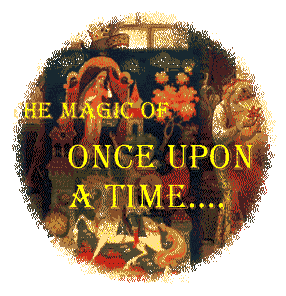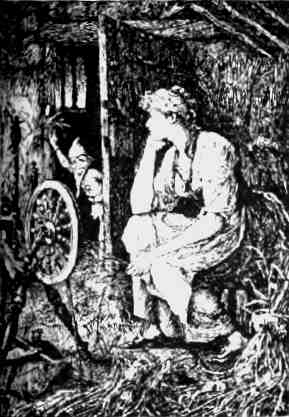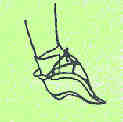|
Narrative Logo - Click for Main Menu Lecture II. Tales Told Around the Fire - The Oral Folk Tradition
The roots of Cinderella and the genius of Perrault The log legacy of a tale such a Cinderella, if it does come from the end of the Ice Age, is not only difficult to trace, but full of the qualities that we have explored in this lecture. Until a tale is written down, it will undergo change continually. The cultural variations we shall see in Cinder-lass stories do not end, however, with a written version. Perrault was the first folk-tale teller to write his stories down as folk tales! Since Perrault, we have had many, many different versions of the tale. Still, it is instructive to stop here and look carefully at the elements that tended to get set in cement with Perrault's version. Perrault knew his audience: his written stories were meant for the upper classes in late 17th Century France. Isolated from the real life of the peasants, and very sophisticated, the Court of Versailles audience had little exposure to the actual conditions of the "folk" - and, instead, enjoyed the romance of early-day slumming, so to speak. Marie Antoinette, for example, had a "play" dairy at Versailles where she and her companions would play at being milkmaids, complete with costumes. One of the important changes from the oral versions of Cinderella (collected later) that we see in Perrault's tale is the transformation of the traditional "animal helper" in the tale to a Fairy Godmother. Interestingly enough, the Godmother has her own antecedents - both as a fairy, as an old woman, and alternately as a spinner, or spinster. The Fairy Godmother - from the animal helper to fairies and fairy tales, old women and weavers. Several outstanding features are apparent throughout béal oideas concerning Gaelic faeries (otherwise known as "the good folk", "the gentry", "the hosts", and an sídhe) such as the presence of the color red in both names and clothing articles, the color green, a proficiency in mischievous, intricate braiding, appearance at liminal times and places, foreknowledge of mortals' names, the need to be acknowledged before binding a mortal, the need for mortals' aid in their works, the habit of living underground, underwater or in cairns, a predisposition for causing bodily harm to mortals and their livestock, and an occasional foray into graciousness. On the question of size, the later Gaelic Faeries show just as much of a tendency towards an outsized mode as petite. Indeed, to clarify even further, many faeries are indistinguishable from mortals at first glance.
The Miller's Daughter at a loss as to how to spin straw into gold in Rumplestiltskin - a Name of the Helper Tale Type
The Glass Slipper--something that is a test.
A picture of a Chinese Foot that has been Bound and is dressed in a tiny slipper. The Glass Slipper? The "test" in Cinderella Tale Types can tell us a lot about the roots of the tale, and about the culture that might have influenced it. The Glass Slipper is peculiarly French, of an era when Europeans were fascinated with the idea of small feet ( and idea that they may have gotten from travelers to the East, such as Marco Polo). In the tale we began with today, the test was quite different.
The Perrault Tales Charles Perrault - first Mother Goose 1697 Sleeping Beauty in the Wood: La belle au bois dormant
-- Type 410
end Lecture Notes from Lecture 2 - |


